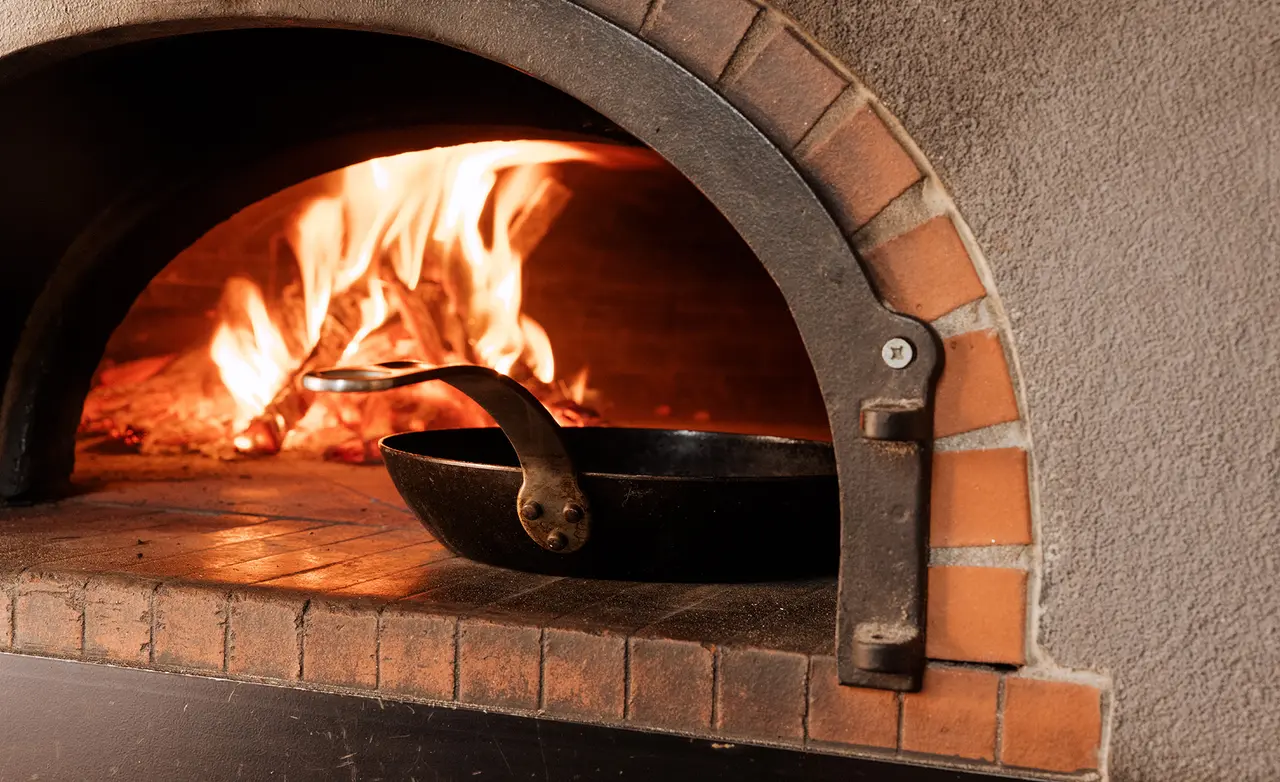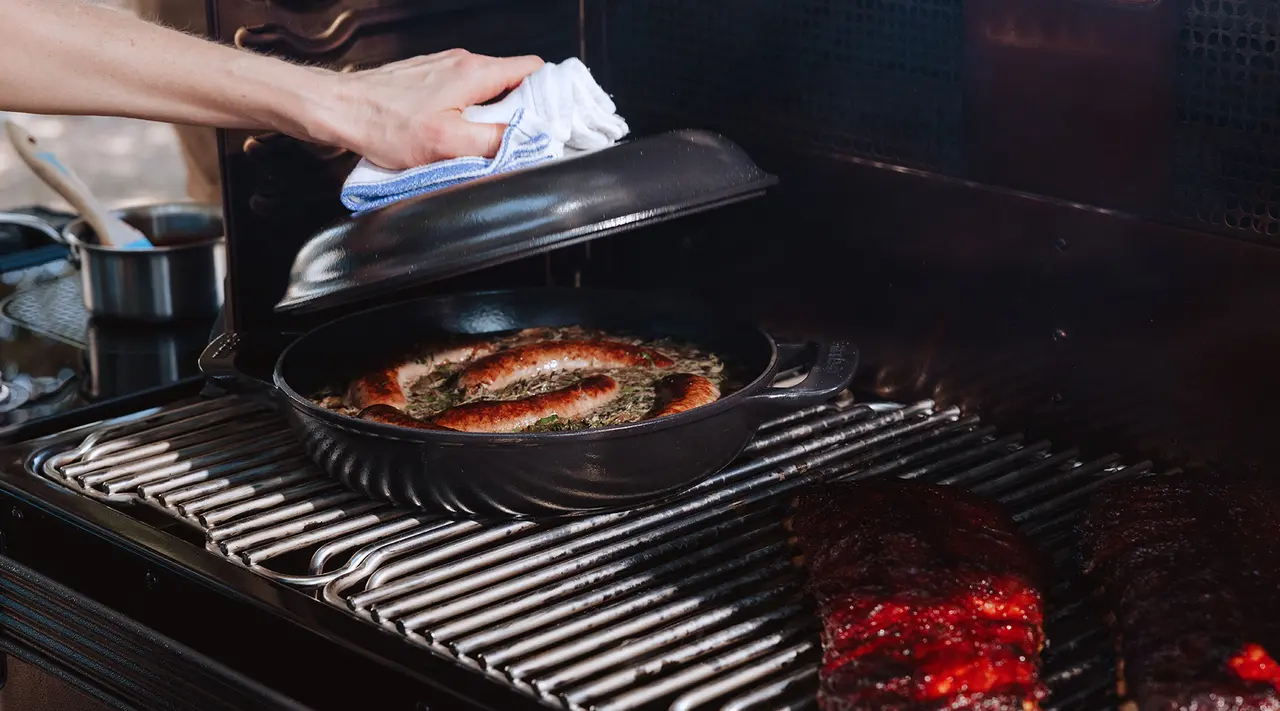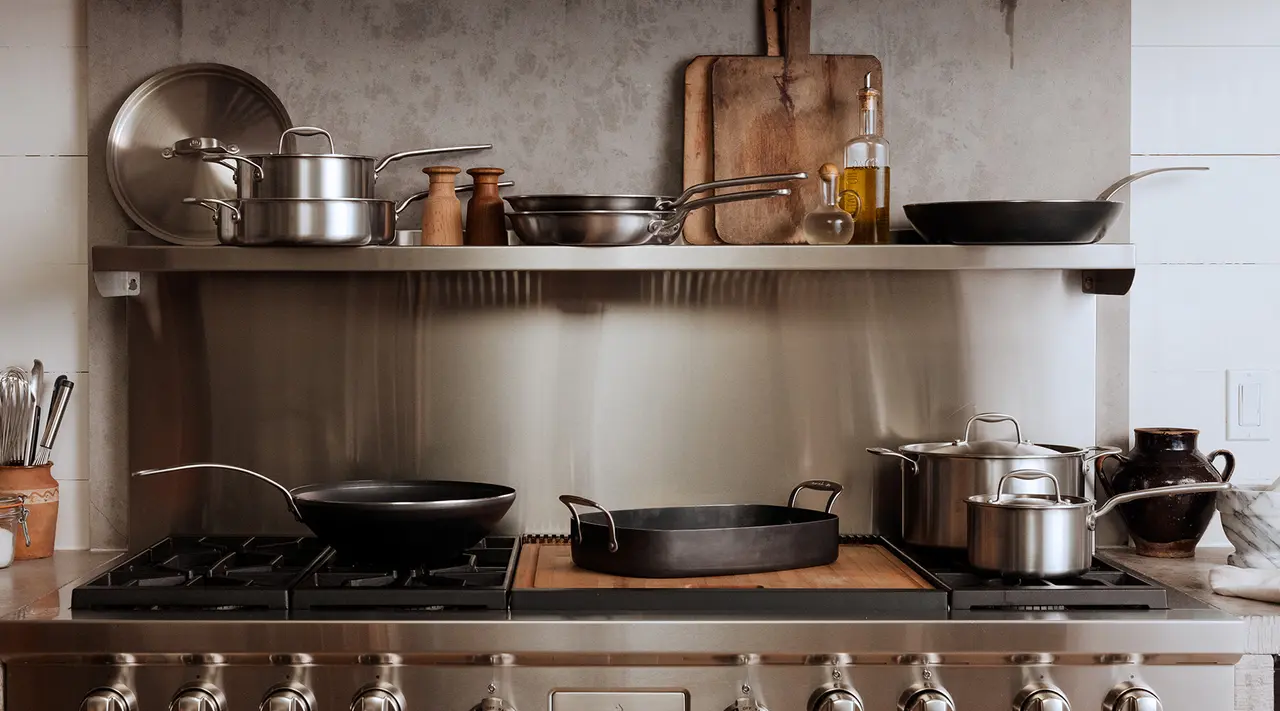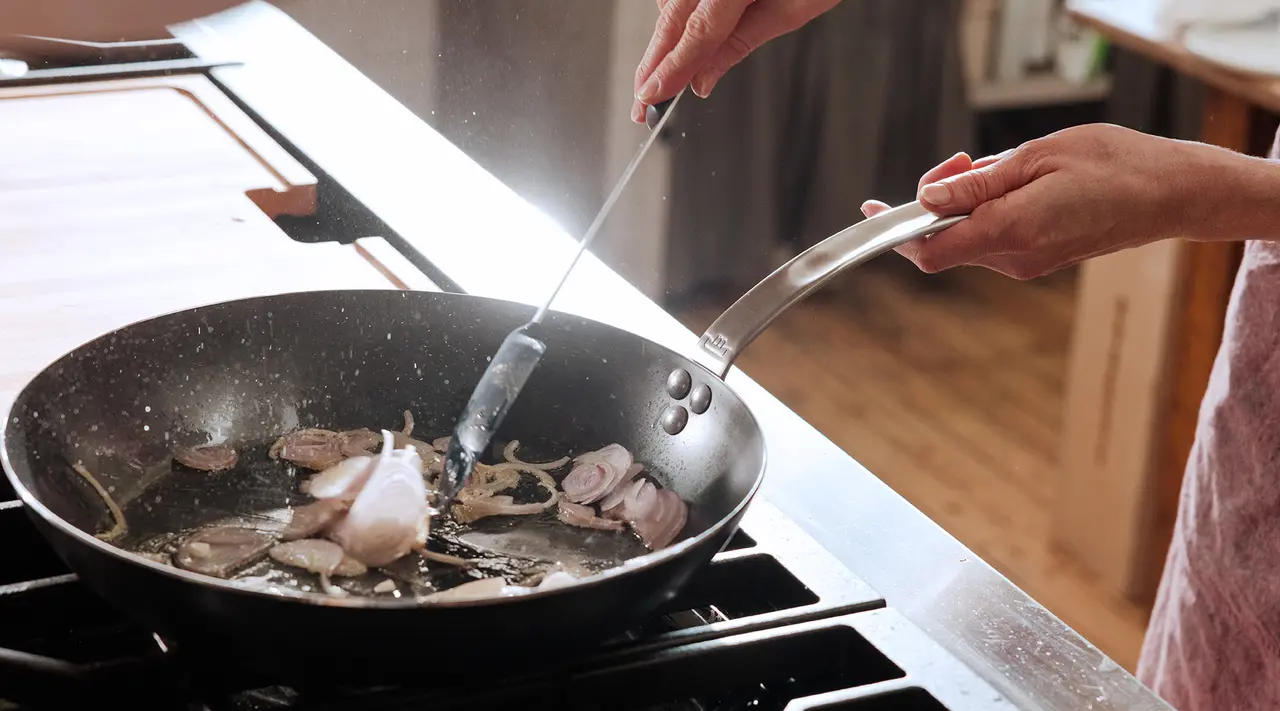Naturally non stick cookware is a pretty hot topic these days, with more and more home cooks looking to replace their traditional coated non stick pans with uncoated, cleaner cookware. Today, we’re turning the camera on two major non stick players: cast iron and carbon steel. Both options are high heat-tolerant; grill- and oven-safe; and, most importantly, offer a naturally non stick, smooth surface once properly seasoned.
So does all this mean that carbon steel and cast iron are pretty much interchangeable? Not quite. We break it all down—from weight to versatility, here’s our comprehensive side-by-side comparison of these two high heat favorites.
What Is Carbon Steel Cookware?

Carbon steel is made from an alloy, or mixture, of 99% iron and 1% carbon, which gets hammered flat into a thin sheet and then tooled into various shapes: woks, frying pans, griddles, and roasting pans among the most common. Compared to cast iron, which is made using a slightly higher iron-to-carbon ratio and has a much thicker build, carbon steel is fairly light and maneuverable—ideal for versatile uses including stir-frying, tossing, and moving from oven to stovetop or grill or even open flame.
The benefits don’t stop there: because of that thin, lightweight construction, carbon steel heats faster and more evenly than cast iron, and responds more quickly to temperature change. This makes it ideal for quick, high heat preparations like stir fries or for cooking delicate foods like flaky fish. And since it’s naturally non stick (not to mention virtually indestructible) once seasoned, you won’t need to worry as much about scraping up bits of burnt food or oil afterward.
What Is Cast Iron Cookware?

Similar to carbon steel, cast iron is a durable, high heat-tolerant metal that can be seasoned to create a naturally non stick piece of cookware. It can be used on pretty much any cooking surface you can think of: grill; gas or electric stovetop; oven, and even over live fire.
The main difference between these two materials is that cast iron is significantly heavier. Whereas a 10” carbon steel pan weighs around 3 lbs, a 10” cast iron pan can weigh up to 5.5 lbs—a notable difference, especially when you’re trying to transfer your pan from stove to oven or grill. That extra weight comes from having a higher percentage of iron—2-4 percent, compared to carbon steel’s 1 percent—and the fact that cast iron is made from liquid metal poured into a mold and allowed to cool, rather than hammered into a thin sheet.
The advantage of this is that cast iron retains heat beautifully. In addition to giving you a deep, golden brown sear on your steaks and chops, it will also keep your braises and stews bubbling away at a steady temperature for hours. Plus, cast iron is almost impossible to ruin—one of the reasons that cast iron skillets are often handed down as heirlooms or sold at antique shops.
Carbon Steel vs Cast Iron: Key Differences

Cooking Surface:
Cast iron tends to have a slightly rougher, more rustic surface than carbon steel, even when perfectly seasoned.
Ease of Handling:
Carbon steel is much lighter and more maneuverable than cast iron.
Heat Retention:
Cast iron has better heat retention, and is an optimal pick for braises, stews, and other slow-cooked recipes.
Responsiveness:
Carbon steel is quicker to heat up and respond to temperature change, so you can easily cut the heat if your food begins to burn.
Rust Resistance:
Both carbon steel and cast iron are susceptible to rust, especially if not seasoned properly or dried thoroughly.
Seasoning:
Both carbon steel and cast iron need to be seasoned to make them non stick. Carbon steel takes slightly less time to season than cast iron.
Versatility:
Both can be used in the oven, on the stovetop, or on the grill. However, carbon steel is a better pick for stovetop cooking, whereas cast iron excels at slower or oven methods like braising, baking, and roasting.
Weight:
Carbon steel is thinner and lighter than cast iron, making it easier to lift and maneuver.
Which Cookware Is Right for You?

At the end of the day, there’s no real reason you shouldn’t own both a carbon steel and a cast iron frying pan. However, if you only plan on purchasing one, it helps to think about the kind of cooking you like to do.
Are you more about slow, steady braises, roasts, and bakes? We suggest opting for cast iron. Do you prefer to have more precision and control when searing steaks or seafood, or want a pan that can seamlessly go from grill to stove? We can’t recommend carbon steel enough.
Can You Use Both Together?
We believe that a well-stocked kitchen is all about variety. Depending on what kind of cook you are, your cookware should make you feel confident and prepared to tackle a wide range of different recipes. Having a high-quality—ideally preseasoned—carbon steel frying pan and a cast iron skillet gives you the freedom to bake, fry, smoke, steam, stir-fry, and more; whenever you feel like it.
Ready to Shop?
When it comes to durable, naturally non stick, highly conductive cookware, you could do a lot worse than carbon steel or cast iron. Choose one or the other based on your cooking habits, or invest in both to really round out your cookware arsenal—e.g. being able to make perfect fried chicken and skillet cornbread on the same night.























